19 Best React UI Libraries in 2025 | Complete Comparison
Posted on
Posted at
Oct 18, 2025
Min read
10

I hope you found this post valuable. If you’re looking for proven frontend and design expertise to elevate your product, feel free to reach out.
Introduction
Selecting the best React UI component library for your project in 2025 is more than a design preference; it affects how well your workflow works, how scalable it is, and how users interact with your app. As web development rapidly evolves, so do the expectations around accessibility best practices, customization, mobile application compatibility, and cutting-edge performance. With game-changing advances like React Server Components (RSC), "ship less JavaScript" trends, and the emergence of top React UI libraries such as shadcn ui, Next UI, and Blueprint UI, your front-end stack choice can define your brand’s agility and success.
This complete article goes over the best UI component libraries for 2025, from utility-first to headless, pre-built UI frameworks, and customizable libraries for building accessible, optimized user interfaces. Consider this your expert roadmap for leveraging UI tools that support scalable landing pages, fast enterprise dashboards, and mobile-ready workflows.
What Are React UI Component Libraries?
React UI component libraries are collections of pre-built, reusable user interface elements designed to work seamlessly within React applications. These libraries bundle together basic UI elements like buttons, input fields, modals, tables, tooltips, and more with uniform APIs, accessibility capabilities, and often the ability to change the look of the library.
The primary purpose of a React UI component library is to streamline and standardize the UI development process. Instead of building every design element from scratch, developers can leverage these ready-made components to ensure design consistency, reduce repetitive code, and accelerate the creation of polished, interactive interfaces. By abstracting away much of the low-level implementation details and best practices (like accessibility and responsive layouts), these libraries help teams focus on the unique business logic and user experiences that set their products apart.
Whether you’re working solo or across a large engineering team, React UI component libraries play a crucial role in modern frontend workflows, especially when the UI takes center stage. They help enforce design guidelines, improve code maintainability, and make it easier to roll out new features. This gives both individual developers and organizations the tools they need to build better apps faster, focusing on accessibility throughout the process.
What to Look for in a React UI Component Library?
Selecting the right React UI component library isn’t just about a flashy demo or the number of components included. It’s about choosing foundational tools that will impact your team’s velocity, application performance, accessibility, and long-term maintainability. Here are key factors to consider:
Accessibility: Accessibility standards are non-negotiable. Look for libraries that make it easy to build keyboard-navigable, screen reader–friendly interfaces, and follow WCAG guidelines out of the box.
Performance: Modern UI libraries need to deliver minimal bundle sizes and support server-side rendering and React Server Components (RSC). Lazy-loading and code-splitting capabilities are increasingly critical for optimal web performance.
Customization & Theming: Your brand or product will likely need a unique look and feel. Choose a library with robust theming capabilities, dark mode support, and clear strategies for customizing component styles—whether through CSS variables, utility-first design (like Tailwind), or CSS-in-JS solutions.
Component Quality & Breadth: It’s not just about quantity; evaluate the quality, consistency, and responsiveness of core components. Well-designed, fully responsive elements speed up projects and raise the UX bar for your entire application.
TypeScript Support: Type-safety is trending toward being a requirement, not a bonus. First-class TypeScript types make development safer, especially for larger teams.
Documentation & Developer Experience: Intuitive APIs, clear documentation, helpful examples, and supportive error messages all boost developer productivity and onboarding speed.
Community & Maintenance: A vibrant community means better longevity, faster bug fixes, and a higher influx of ideas. Check GitHub stars, issues activity, release frequency, and whether the project is backed by a committed team or company.
AI & Future-Readiness: Libraries are beginning to incorporate AI-assisted features, such as automated theming or code suggestions. Ask yourself: Does the library have a roadmap for RSC, AI-native components, or other emerging demands?
The Benefits of Using a React UI Component Library?
The latest generation of React UI component libraries delivers more than just pre-designed elements—they form the backbone of modern, accessible, and visually consistent user interfaces across web and mobile platforms. Unlike monolithic systems of the past, UI libraries for 2025 are streamlined, modular, and often focused on specific developer needs, such as community support, performance-first rendering, mobile optimization, and deep customization options.
Key advantages of adopting a modern UI component library:
Accelerated web development using pre-built UI and reusable components
Reliable built-in accessibility features and strict adherence to WAI-ARIA guidelines
Rapid community support for troubleshooting and fast iteration
Advanced utility-first libraries for unique branding, Next.js integration, or headless workflows
Optimized performance with SSR, tree-shaking, lazy loading, and hybrid mobile support
Framer Motion integration for seamless interactivity and fluid UI animations enhances the frontend development experience.
Whether your priority is creating frictionless landing pages, scalable admin tools, or responsive mobile UIs, the right library empowers your team to quickly build, implement, and maintain consistent, accessible React components, thereby keeping both branding and user experience future-ready.
How We Chose the Best React UI Component Libraries
With hundreds of React UI libraries available and new ones launching every year, it's crucial to narrow the selection to those that truly move the needle for modern frontend development in 2025 and beyond. Our criteria were informed by long-term relevance, future readiness, and practical day-to-day utility for professional teams.
Here are the factors we prioritized:
Active Maintenance & Community Support: We only included libraries that show ongoing maintenance, frequent updates, and robust activity in their GitHub repositories. A thriving community signals better long-term stability and access to expert help.
Modern Tech Stack: Compatibility with current React versions (v18+), strong TypeScript support, and alignment with SSR and RSC are must-haves. Libraries tied to outdated paradigms or lacking clear plans for future React trends were excluded.
Accessibility by Design: Accessibility isn't optional. It's critical for compliance and universal usability. Our selections prioritize libraries with built-in ARIA support and WCAG compliance, or those that make it easy to implement accessible components.
Theming & Customization Capabilities: UI libraries must be easily adaptable to your brand via theming, dark mode, and minimal styling friction. Deep, intuitive customization is increasingly important for organizations building unique design systems.
Performance & Scalability: We looked for libraries architected around concepts like tree-shaking, bundle splitting, and minimal runtime overhead. This is especially vital as SSR and React Server Components shift more responsibility server-side.
Alignment with Design System Best Practices: The best libraries make it seamless to synchronize design and code, offering Figma kits, clear documentation, and flexible component APIs to fit into modern workflows.
Component Breadth and Quality: Finally, we considered comprehensiveness and reliability across real-world scenarios, from primitive inputs to sophisticated data tables, charts, and native-feeling complex widgets.
Only those React component libraries delivering across these key dimensions made the final cut.
Comparison Table: Top React UI Component Libraries for 2025
Library Name | GitHub Stars | Weekly Downloads | Key Features | Best Use Cases |
|---|---|---|---|---|
Material-UI (MUI) | 96.8k+ | 6.6M+ | 100+ components, advanced theming, Figma kits, MUI X, accessibility, pre-built UI | Enterprise apps, admin panels, SaaS |
Ant Design (AntD) | 96.4k+ | 2.1M+ | Enterprise UI, data viz, i18n, design resources, accessibility | CRMs, fintech, dashboards |
React-Bootstrap | 22k+ | 1.3M+ | Rebuilt Bootstrap, theme compatibility, stable community | Legacy upgrades, quick landing pages |
shadcn/ui | 97.9k+ | NA | Copy-paste components, Tailwind/Radix, code ownership, utility-first approach | Custom design systems, developer control |
Radix UI | 17k+ | 20M+ | Unstyled primitives, composable, accessibility best practices | Accessible React, custom workflows |
React Aria | 11.5k+ | 1.1M+ | Accessibility hooks, headless logic, WAI-ARIA, gesture & touch support | Robust a11y, custom design systems |
Headless UI | 28k+ | 3.26M+ | Unstyled, Tailwind-native, SSR, accessibility | Tailwind + Next.js projects |
Chakra UI | 39k+ | 2.2M+ | Modular, dark mode, style props API, TypeScript, built-in accessibility features | Fast prototyping, custom themes |
Mantine | 30k+ | 893k+ | 120+ components, 70+ hooks, feature-rich, mobile focus | Dashboards, SaaS, business tools |
HeroUI (NextUI) | 27k+ | 197K+ | Tailwind/React Aria synergy, modern design, Framer Motion animations | Modern marketing, fast MVPs |
React Suite | 8.6k+ | 118k+ | Multi-theme, internationalization, accessible, pre-built UI | Admin, back-office, B2B |
Tremor | 15k+ | 124k+ | Data viz, analytics, dashboard layouts, copy-paste friendly | Analytics panels, data-driven UIs |
BlueprintJS | 21k+ | 224k+ | Data-dense, desktop-focused, performance-optimized | Enterprise dashboards, tools |
PrimeReact | 8k+ | 2.2M+ | 90+ components, advanced data table, themes, accessibility | ERP, data-heavy frontends |
Semantic UI React | 13.2k+ | 255k+ | Declarative, jQuery-free, expressive API | Team adoption, readable codebases |
Grommet | 8k+ | 48k+ | Responsive, mobile-first, easy theming, accessibility | Public sites, educational apps |
React-Admin | 26.3k+ | 112k+ | B2B focus, CRUD, MUI-based, API connectors | Admin panels, CRMs, internal tooling |
Onsen UI | 8k+ | 5k+ | Native mobile look/feel, cross-platform, hybrid/PWA, lazy loading | Mobile-first, hybrid web/mobile apps |
CoreUI | 712+ | 93k+ | Admin templates, SASS-based, dedicated icon set, cross-browser | Admin dashboards, backend templates |
Detailed Reviews of the Top 19 React UI Libraries
1. Material UI (MUI) - Enterprise-Ready, Future-Proof
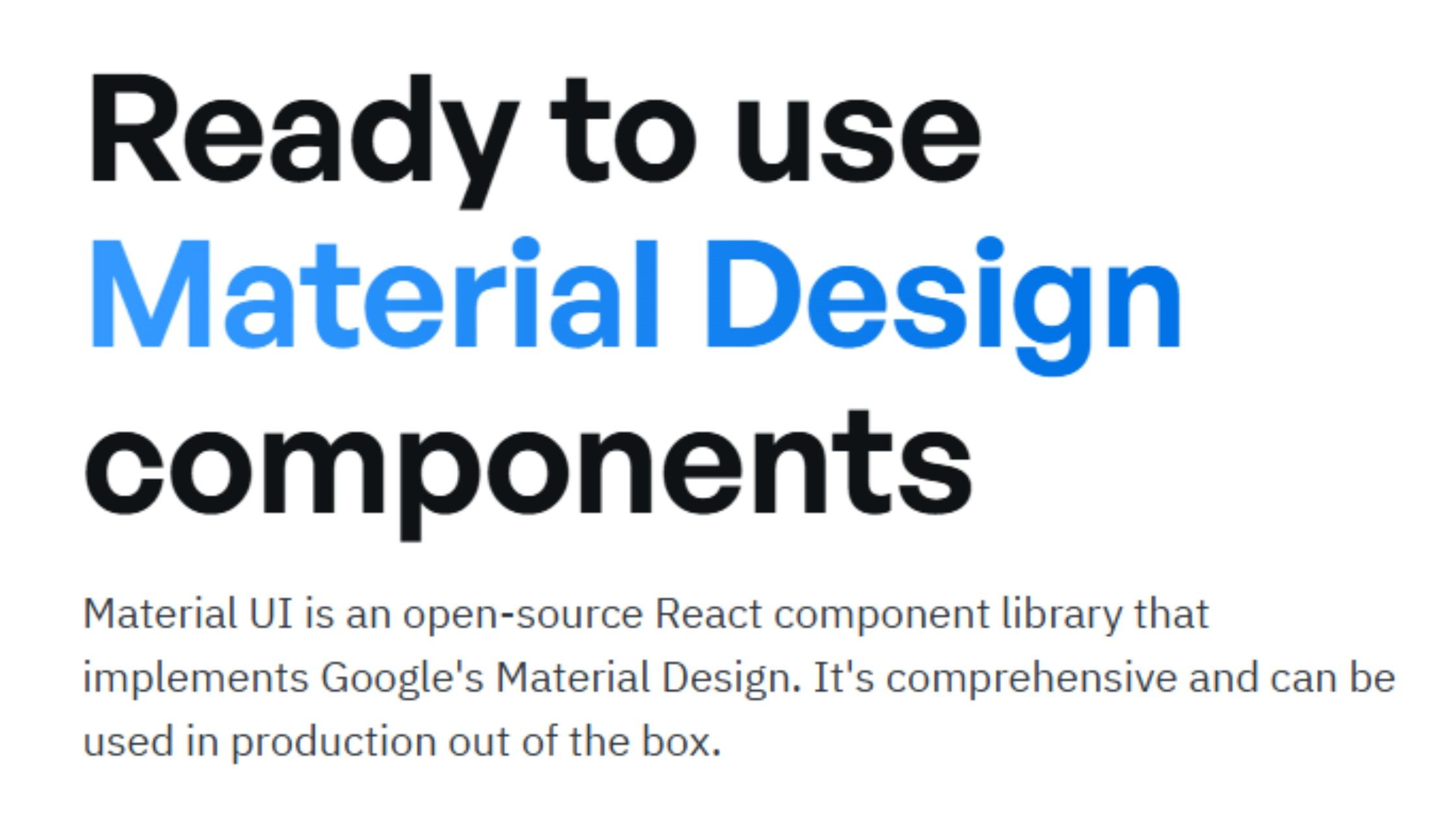
Material-UI (MUI) is one of the most popular React UI libraries, trusted by thousands of development teams for building scalable enterprise applications. It stands out for its comprehensive suite of pre-built components, robust theming and customization options, and first-class accessibility support, making it a go-to choice for data-driven products and design systems.
GitHub Stars: a testament to its popularity among top React UI component libraries. 96.8k+
Weekly Downloads: ui is optimized for high performance. 6.6M+
Key Features:
Robust implementation of Google’s Material Design principles, prioritizing accessibility.
Advanced theming, dark/light mode, CSS variables, and new Pigment CSS zero-runtime styling
Huge catalog of production-ready components, including data grids and charts
Built-in accessibility, localization, and TypeScript support
AI-assisted theming tools (roadmap)
Benefits:
Mature, actively maintained, and trusted for enterprise work
Large ecosystem, great documentation, and internationalization
Consistent, modern design out-of-the-box; adaptable for branding
Predictable upgrades and roadmap toward React Server Components (RSC)
2. Ant Design (AntD) - Enterprise User Interface Powerhouse
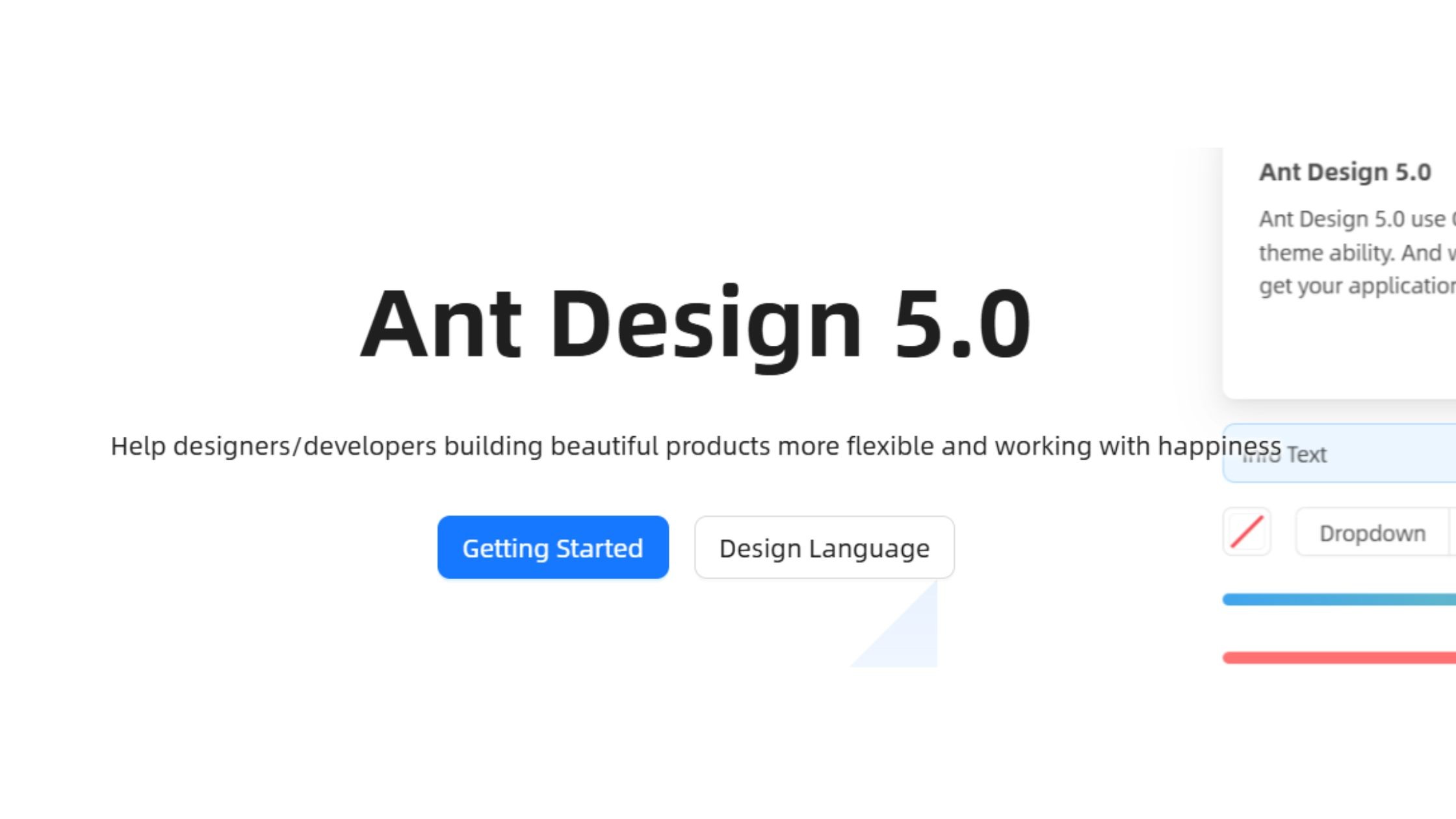
Ant Design is a comprehensive React UI library designed for building data-heavy and enterprise-level applications. Renowned for its extensive component suite, advanced internationalization capabilities, and exceptional support for complex user interfaces, AntD enables teams to efficiently create scalable, professional, and globally accessible tools.
GitHub Stars: 96.4k+
Weekly Downloads: 2.1M+
Key Features:
Vast library of enterprise-grade UI components
Advanced data visualization, charts, date pickers, and input controls
Strong internationalization/localization support is essential for libraries focused on creating global applications.
Robust theming engine and CSS variables
Comprehensive accessibility by default
Benefits:
Ideal for building financial apps, admin portals, and SaaS back-offices
Quick development of complex, data-heavy dashboards
Active community and regular updates
Roadmap focused on RSC integration and AI-native tooling
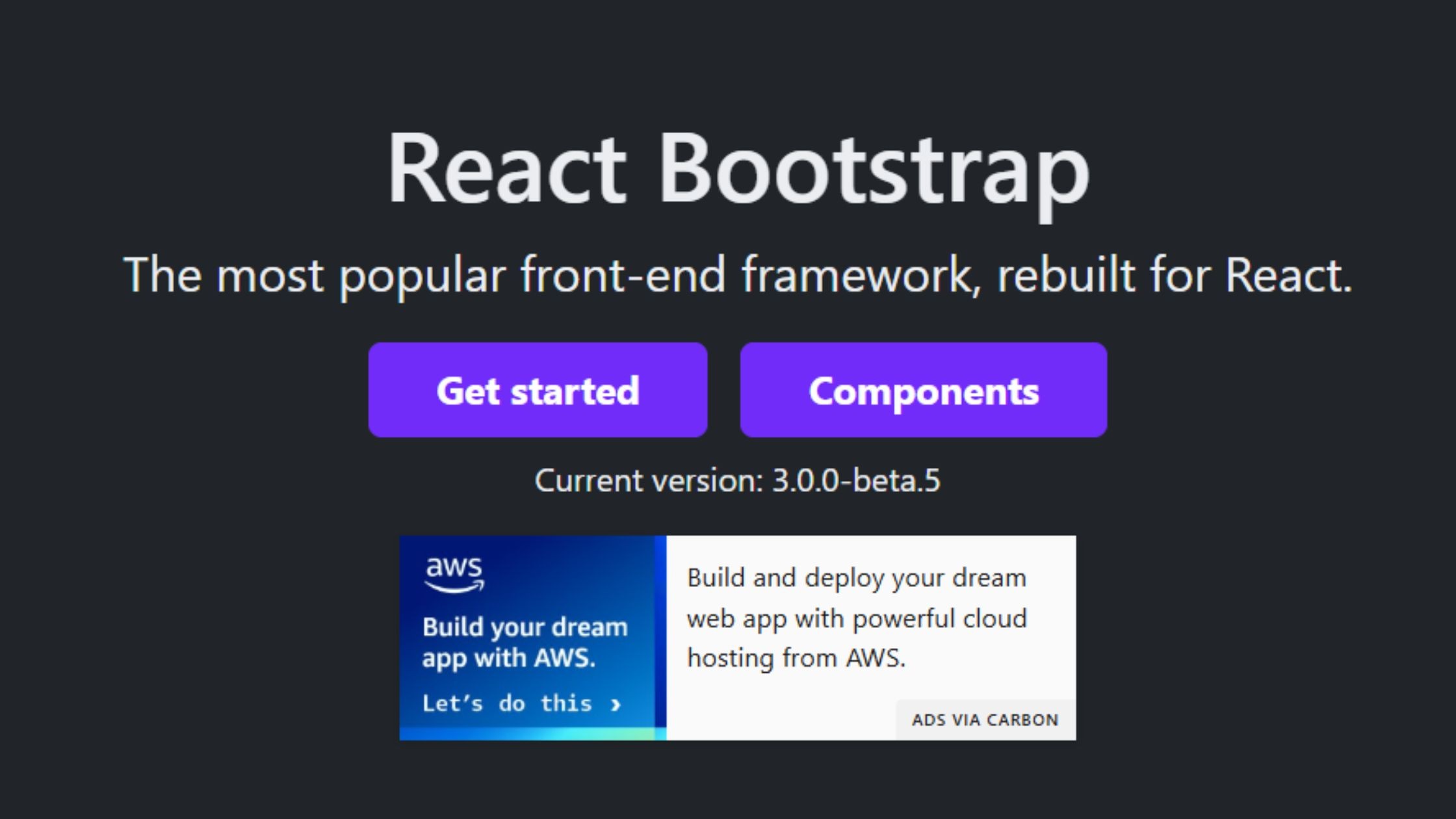
React-Bootstrap brings all of Bootstrap’s popular grid system and components natively into the React ecosystem. It’s a trusted choice for developers seeking to modernize legacy Bootstrap projects, rapidly build landing pages, or deliver admin panels with minimal friction, while maintaining full compatibility with React’s component-driven paradigm.
GitHub Stars: 22k+
Weekly Downloads: 1.3M+
Key Features:
Seamless Bootstrap v5 grid and utility integration
Familiar syntax for teams from Bootstrap backgrounds
SSR-friendly and accessibility-focused
Modular imports for optimized bundles
Benefits:
Rapid migration of legacy UIs into React
Stable, predictable, and beginner-friendly libraries help developers build applications with confidence.
Great documentation, wide adoption, and simple customization
4. shadcn ui - Utility-First, Owner-Centric Approach
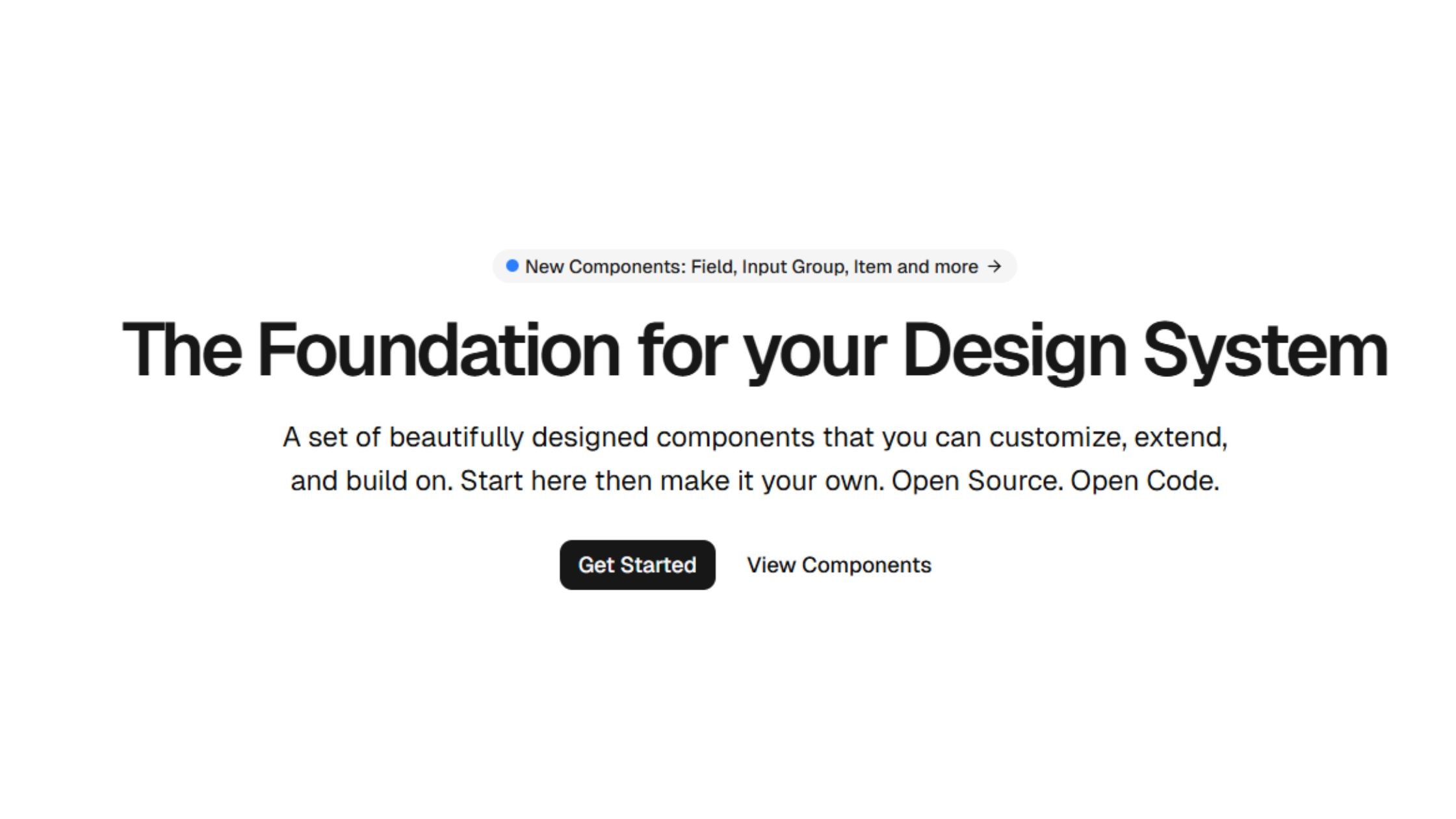
shadcn/ui is a utility-first React library that delivers highly customizable, accessible components you copy and paste directly into your project. Its approach gives developers complete ownership of the UI code, enabling extensive customization without the need to manage external dependencies. Built with Tailwind CSS and Radix UI under the hood, it’s ideal for teams who want maximum flexibility and control over their component logic and styling.
GitHub Stars: 97.9k+
Weekly Downloads: N/A (copy-paste model)
Key Features:
Copy-paste Tailwind CSS-based React components for total code ownership
Accessibility-first: built with Radix UI primitives
CLI for streamlined import and scaffolding
Designed for rapid prototyping and full customization
Benefits:
Developer freedom: your code, your rules.
Lightweight: only add what you use
Easy to integrate into modern AI and SSR projects
Fast-growing, active community, and excellent documentation
5. Radix UI - Unstyled Primitives, Composable Workflows
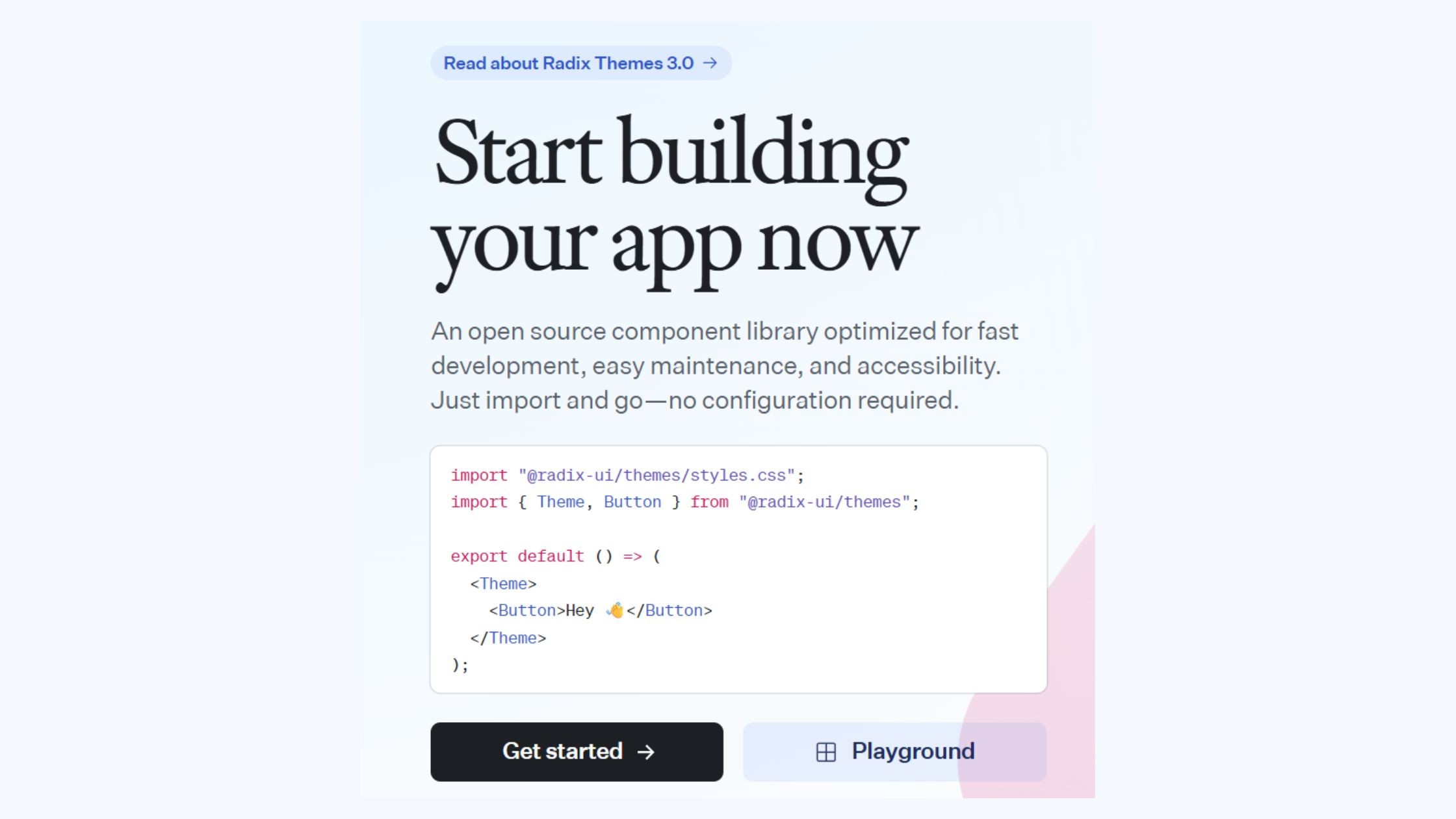
Radix UI is a developer-focused library that delivers a collection of unstyled, accessible React primitives. It empowers teams to build fully custom, branded user interfaces by giving them granular control over appearance and behavior, while handling complex accessibility and interaction logic under the hood.
GitHub Stars: 17k+
Weekly Downloads: 20M+
Key Features:
Offers 25+ primitive, unstyled, accessible components
Manages complex UI logic like focus and keyboard navigation
Ideal for SSR and headless UI implementations
Benefits:
Provides ultimate flexibility for building custom-branded UI libraries
Delivers strong accessibility out of the box
Serves as the foundation for other UI libraries, such as shadcn/ui
6. React Aria - Hooks-Based, Highly Accessible
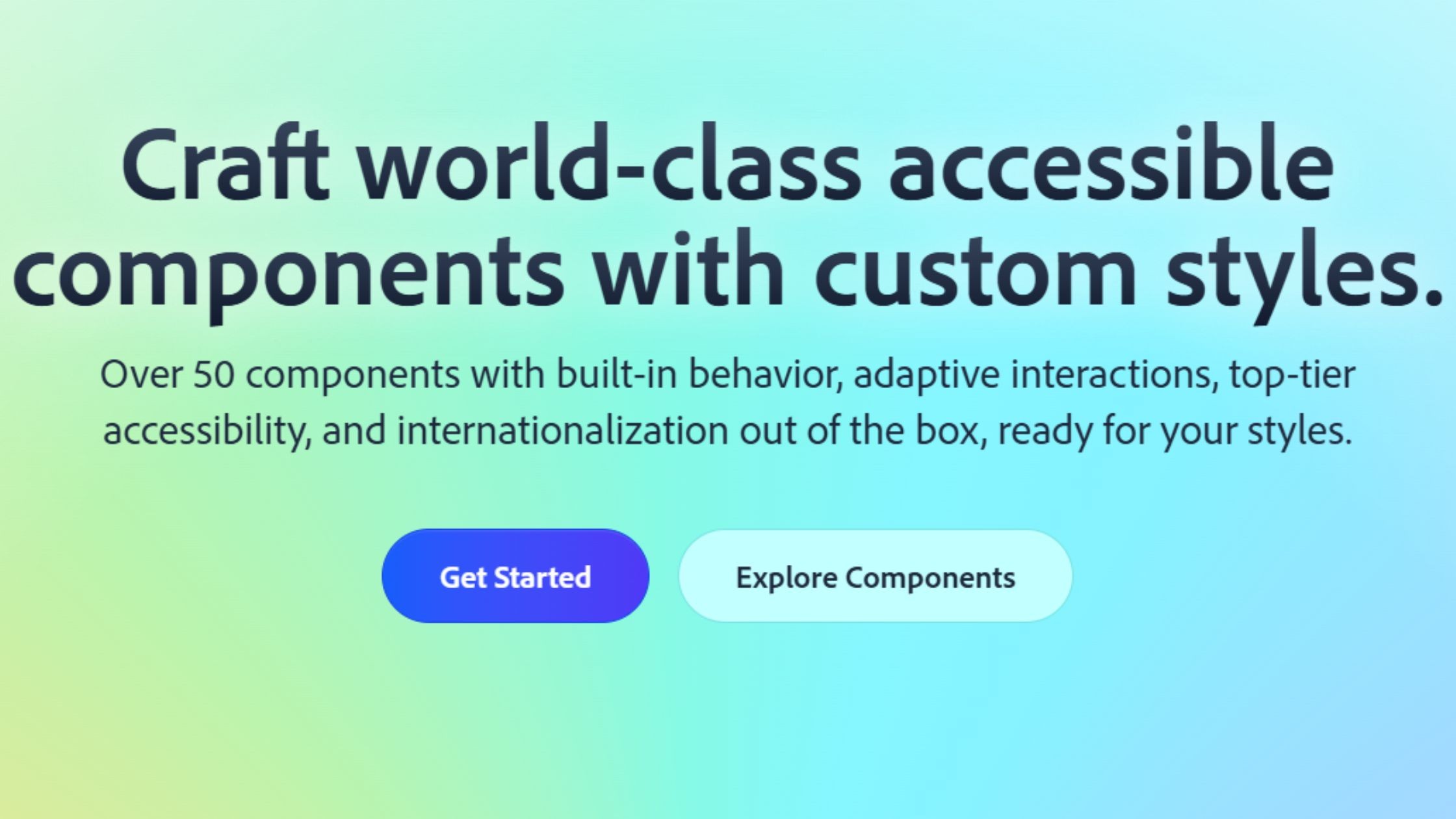
React Aria is a hooks-driven library developed and supported by Adobe, designed to bring accessible, robust interaction logic to your React components. Abstracting away complex accessibility patterns and event handling into easy-to-use hooks, it empowers developers to build highly inclusive interfaces while maintaining full control over styling and structure.
GitHub Stars: 11.5k+ (React Spectrum umbrella)
Weekly Downloads: 1.1M+ (in libraries using it)
Key Features:
Accessibility and interaction logic as composable React hooks
Internationalization and advanced gesture support
Roadmap for voice, gesture, and multimodal input
Benefits:
Highest accessibility compliance; ideal for global products
Facilitates building bespoke, accessible design systems
Corporate backing by Adobe ensures longevity
7. Headless UI - Tailwind-Native, Pre-Built Logic
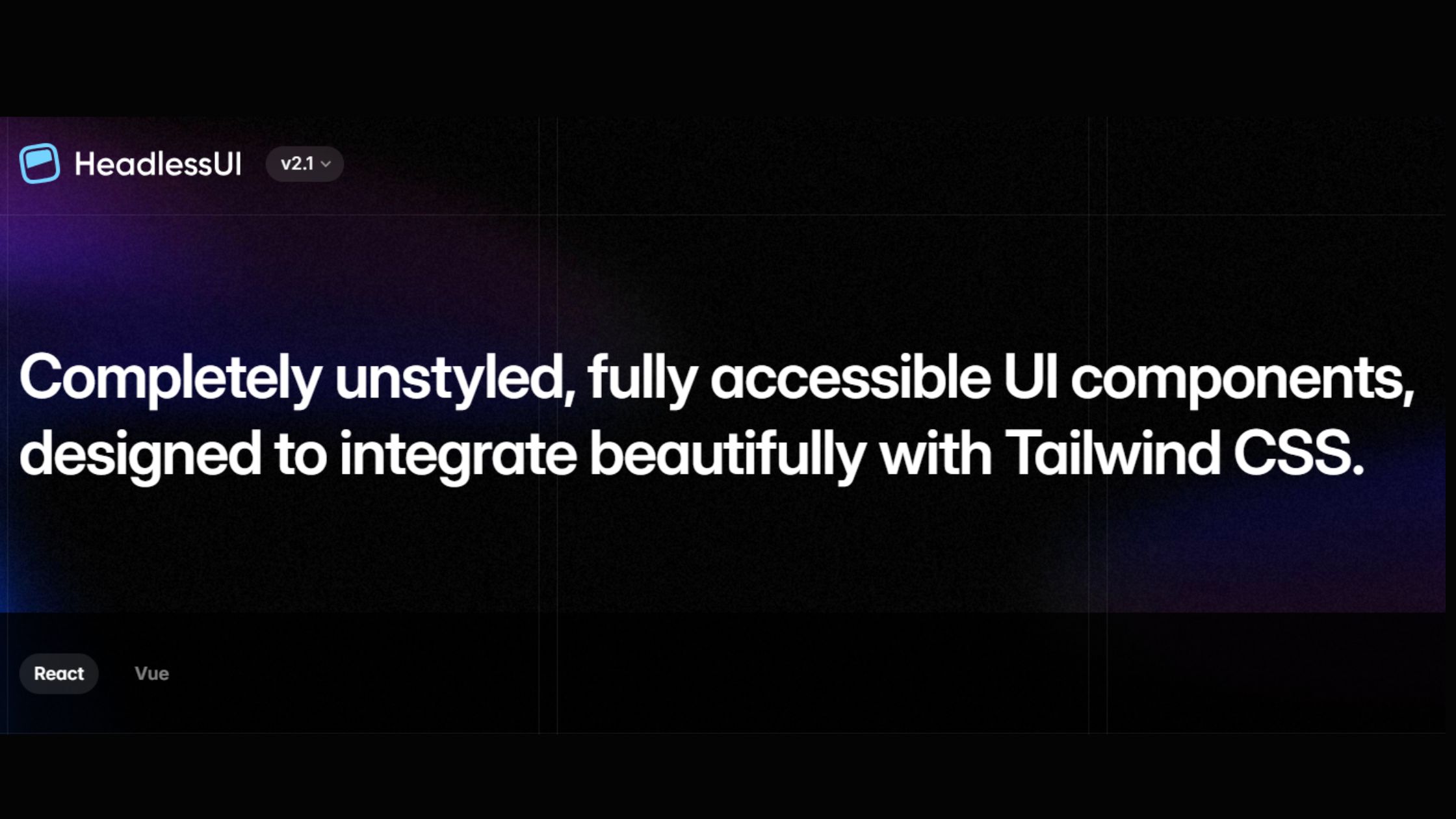
Headless UI is a Tailwind-native library that provides unstyled, fully accessible components, giving developers the power to build custom, branded UIs without sacrificing accessibility or performance. It pairs seamlessly with Tailwind CSS and frameworks like Next.js, delivering robust state and accessibility logic while letting you handle all aspects of presentation.
GitHub Stars: 28k+
Weekly Downloads: 3.26M+
Key Features:
Fully unstyled, accessible components (menus, lists, modals, etc.)
Tight integration with Tailwind CSS and Next.js
SSR and dark mode support
Ships only state and accessibility logic for maximum creative control
Benefits:
Empowers design system teams to implement custom designs effortlessly
Seamlessly fits modern Tailwind and Next.js workflows
Lightweight, ensuring fast, responsive user experiences
8. Chakra UI - Simple, Modular, Developer-Optimized
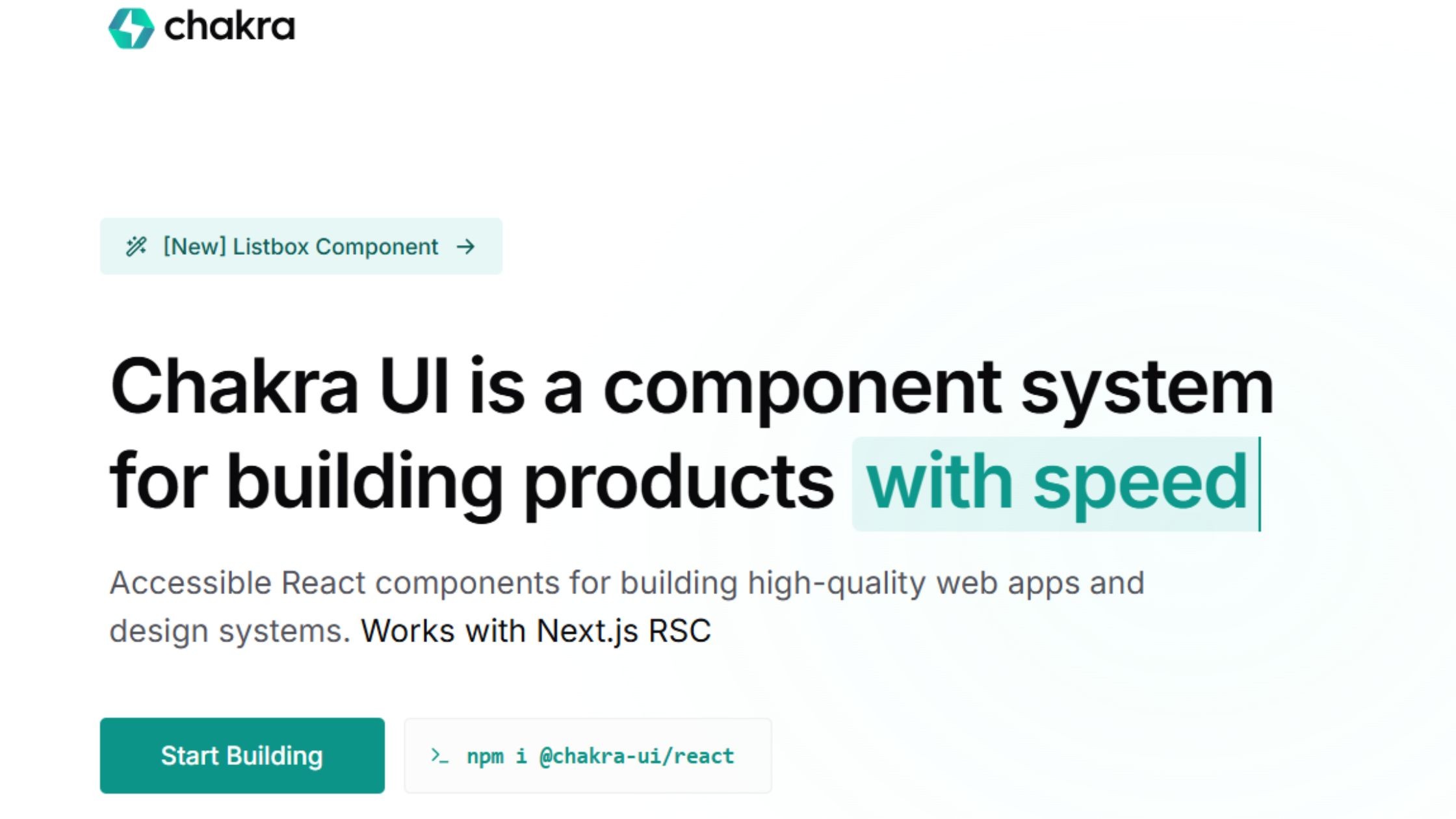
Chakra UI is a modular React UI library known for its outstanding developer experience, intuitive styling approach, and built-in accessibility. It enables teams to rapidly build responsive applications and design systems using a flexible style-prop API, pre-configured themes, and out-of-the-box support for accessibility and dark mode.
GitHub Stars: 39k+
Weekly Downloads: 2.2M+
Key Features:
Intuitive style prop API (inspired by Styled System)
Built-in themes, color modes, and dark mode
Accessibility-first and responsive by default
TypeScript and RTL (right-to-left language) support
Benefits:
Accelerates MVP and design system creation
Pleasant DX, easy theming, and extensive documentation
Forward compatibility with Ark UI primitives and RSC
9. Mantine - Feature-Rich, Mobile-Optimized
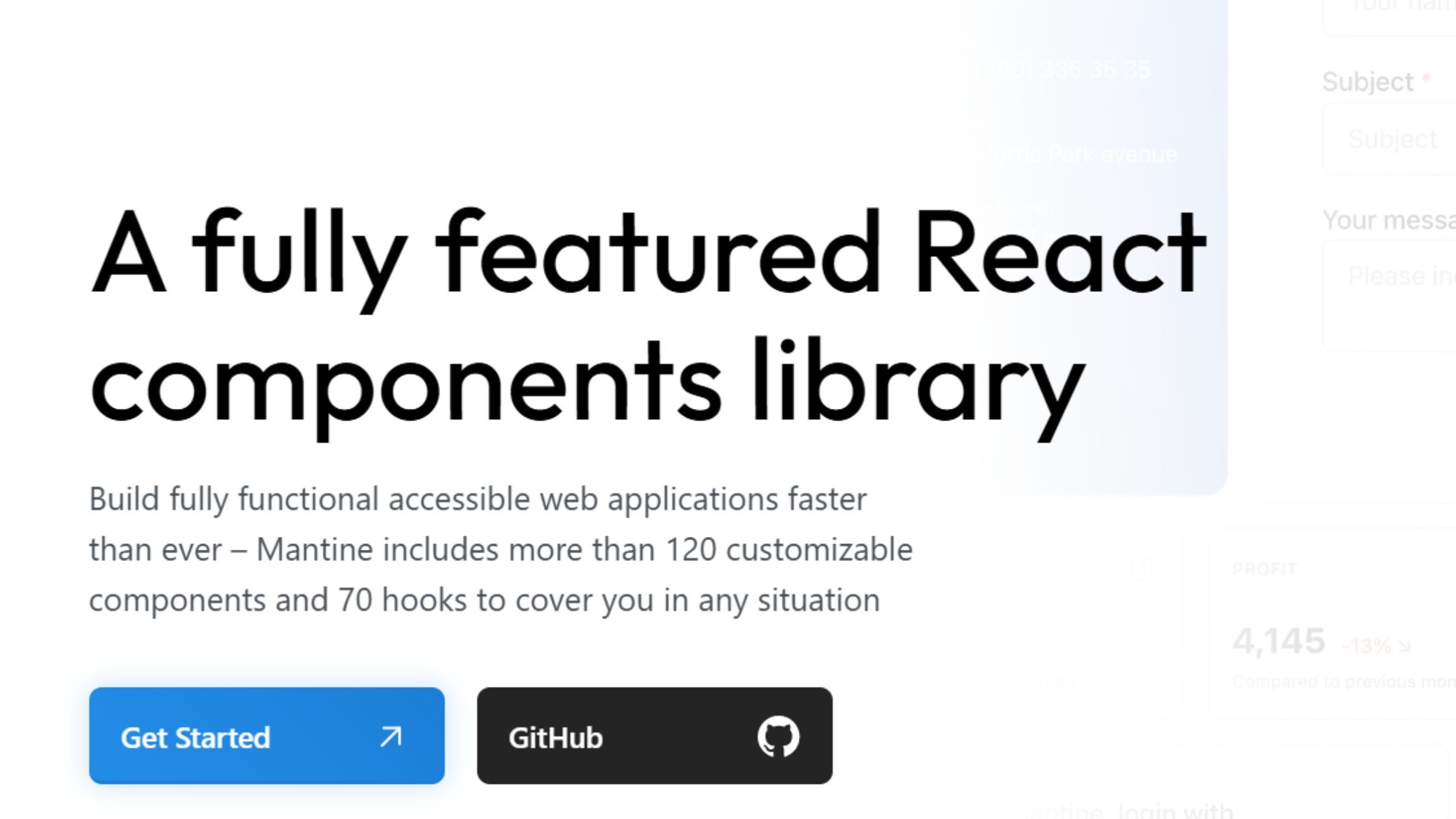
Mantine is a comprehensive React UI library that excels in delivering a broad set of components and over 70 hooks. Designed with flexibility and performance in mind, it's especially well-suited for building dashboards and mobile-first applications where speed, customization, and robust functionality are essential.
GitHub Stars: 30k+
Weekly Downloads: 893k+
Key Features:
120+ components, 70+ hooks, and extensive documentation
Deep customization with CSS-in-JS and theme utilities
Built-in notifications, date pickers, form handling, and modal features
AI-powered prop suggestion (roadmap)
Benefits:
Ideal for dashboards, analytics, and mobile-first UIs
Fast learning curve; excellent for collaborative teams
Robust and forward-thinking, optimized for React Server Components (RSC) and developer experience
10. HeroUI (NextUI) - Modern Design, Framer Motion Support
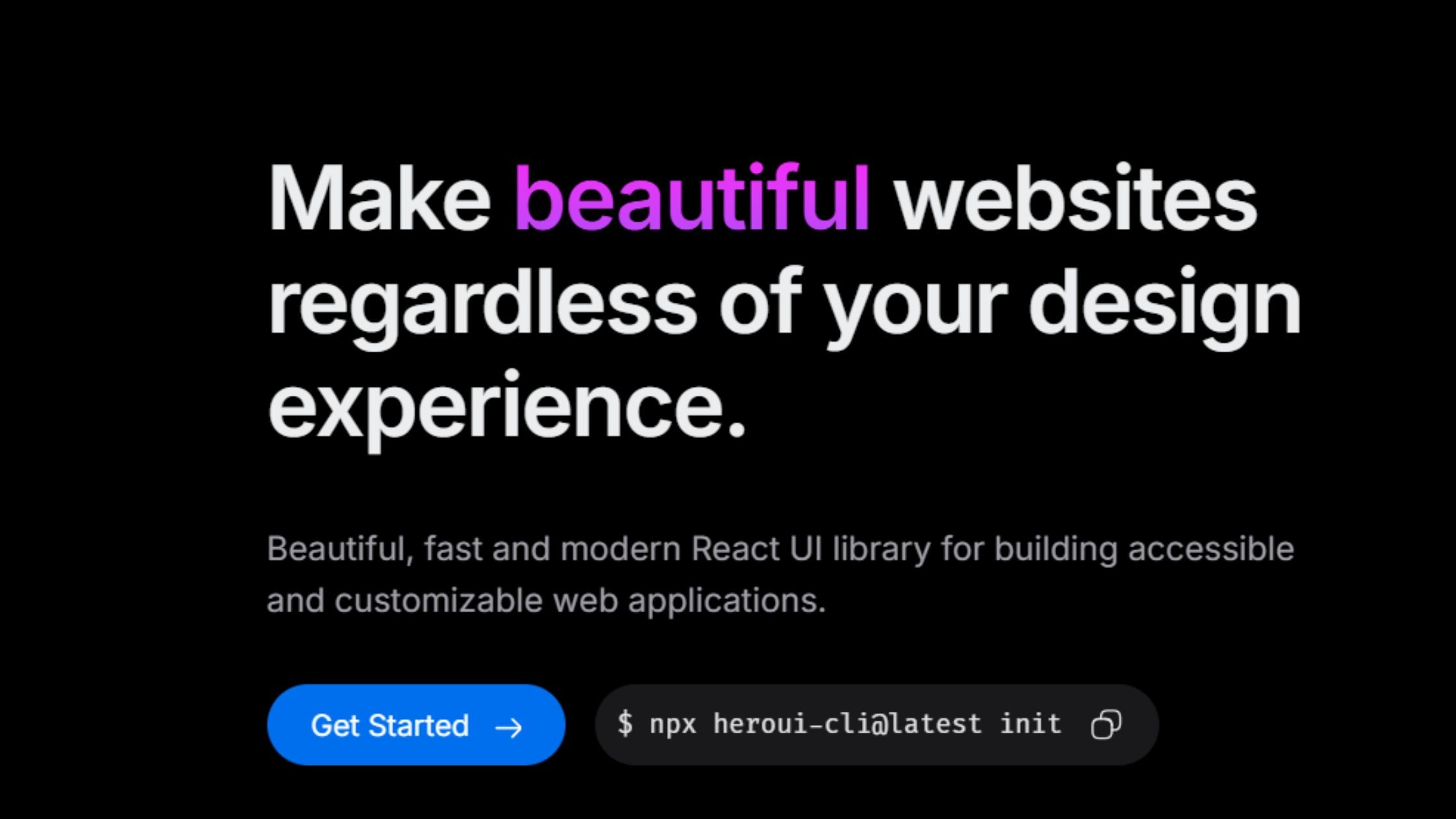
HeroUI (formerly NextUI) is a modern React UI library combining the utility of Tailwind CSS with the accessibility features of React Aria. It's especially well-suited for building visually stunning websites, landing pages, and marketing sites where design impact and performance are top priorities, thanks to its customizable components.
GitHub Stars: 27k+
Weekly Downloads: 197k+
Key Features:
Built on Tailwind CSS and React Aria
Modern component design with customizable theming
Integrated Framer Motion animations
SSR support and accessibility by default
Benefits:
Great for visually impactful sites and landing pages
Lightweight and fast, ideal for Next.js projects
Consistent, modern aesthetics with flexibility out of the box
11. React Suite – Robust for Back Office and B2B
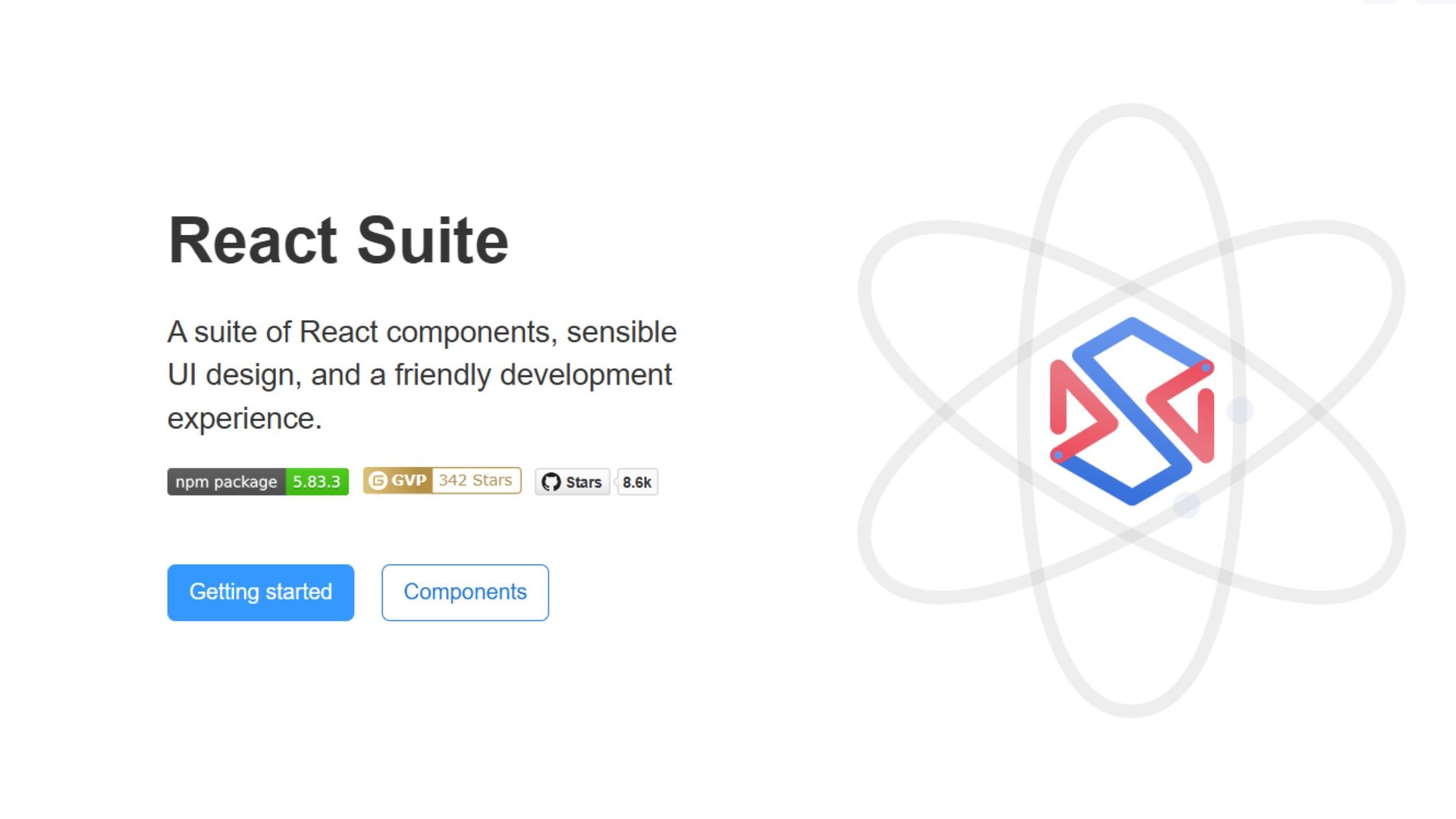
React Suite is a comprehensive React UI library purpose-built for enterprise back-office, middle-platform, and B2B applications. It stands out with its strong focus on multi-theme, multi-language, and internationalization support, making it a reliable solution for complex admin panels and business apps that require global scalability.
GitHub Stars: 8.6k+
Weekly Downloads: 118k+
Key Features:
Designed for enterprise back/mid-office systems
Multi-theme, multi-language support
Internationalization and dark/light toggle
Rich data tables, forms, and chart widgets
Benefits:
Reliable for admin panels, CRMs, and SaaS projects
Customizable design and workflow
Maintained with enterprise productivity in mind
12. Tremor – Dashboard & Analytics Specialist
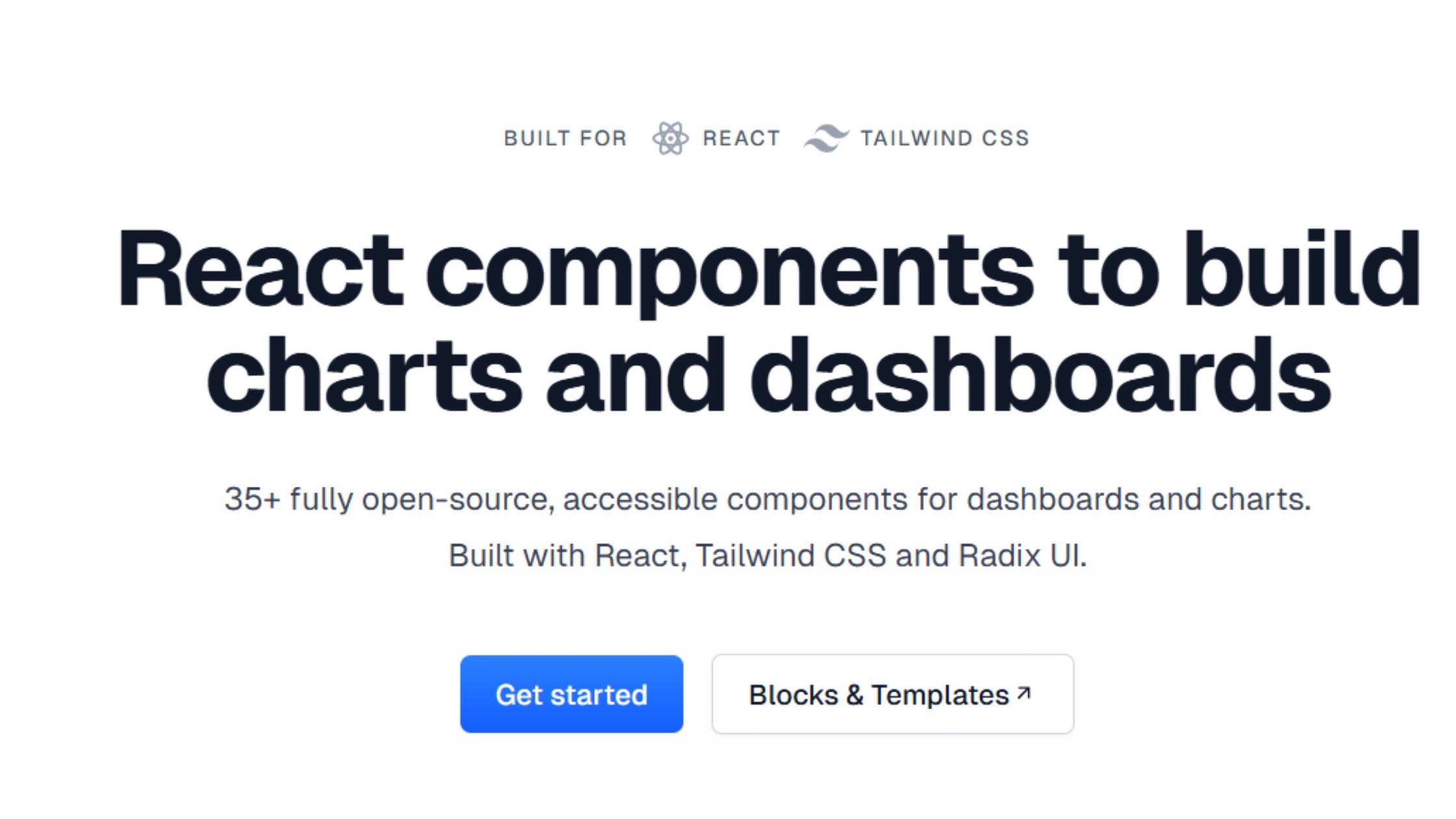
Tremor is a specialized React UI library purpose-built for creating dashboards and analytics interfaces. It provides a suite of prebuilt components designed for metrics, charts, filtering, and analytics, making it easy to build professional data visualizations and business intelligence UIs with minimal setup.
GitHub Stars: 15K
Weekly Downloads: 124K
Key Features:
Prebuilt metrics, charts, filters, and analytics components
Built on Tailwind CSS for easy theming
Focused exclusively on dashboard UI needs
Benefits:
Build business intelligence dashboards fast
Professional data visualizations with minimal setup
No bloat—bring-your-own layout, plug-and-play usage
13. Blueprint UI - Data-Dense, Desktop-Like Experience
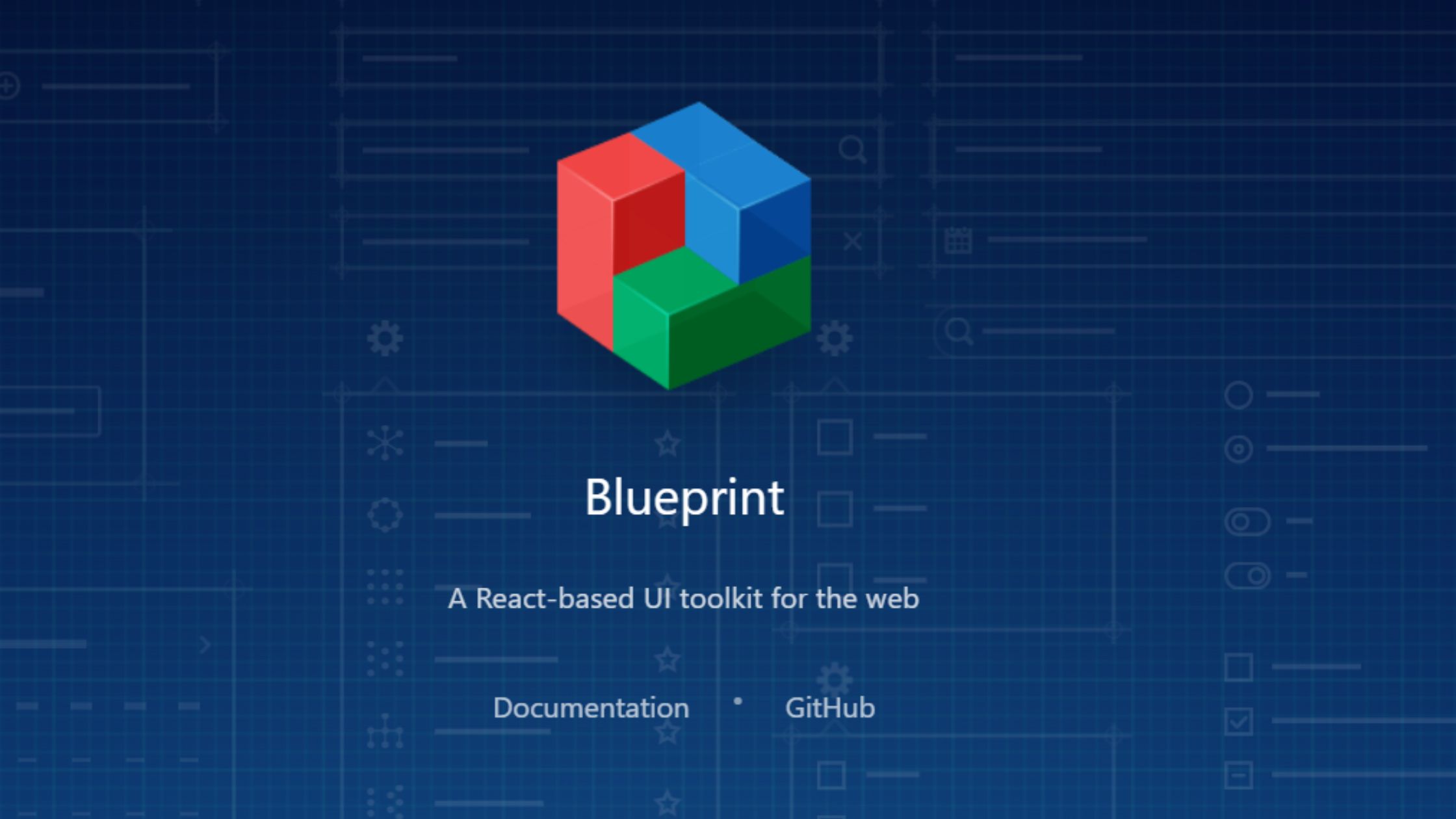
BlueprintJS is a robust React UI toolkit purpose-built for complex, data-intensive applications that demand a desktop-like user experience. It excels in creating feature-rich admin panels, internal tools, and enterprise dashboards where performance, scalability, and powerful table or form components are critical.
GitHub Stars: 21k+
Weekly Downloads: 224k+
Key Features:
High-performance table, form, and overlay components
Optimized for keyboard navigation and screen-reader support
Themeable with light/dark built-in
Benefits:
Outstanding for data-heavy internal tools
Handles large-scale datasets and “desktop app” interfaces smoothly
Constantly maintained by Palantir and the open source community
14. PrimeReact - All-in-One, Feature-Rich Set
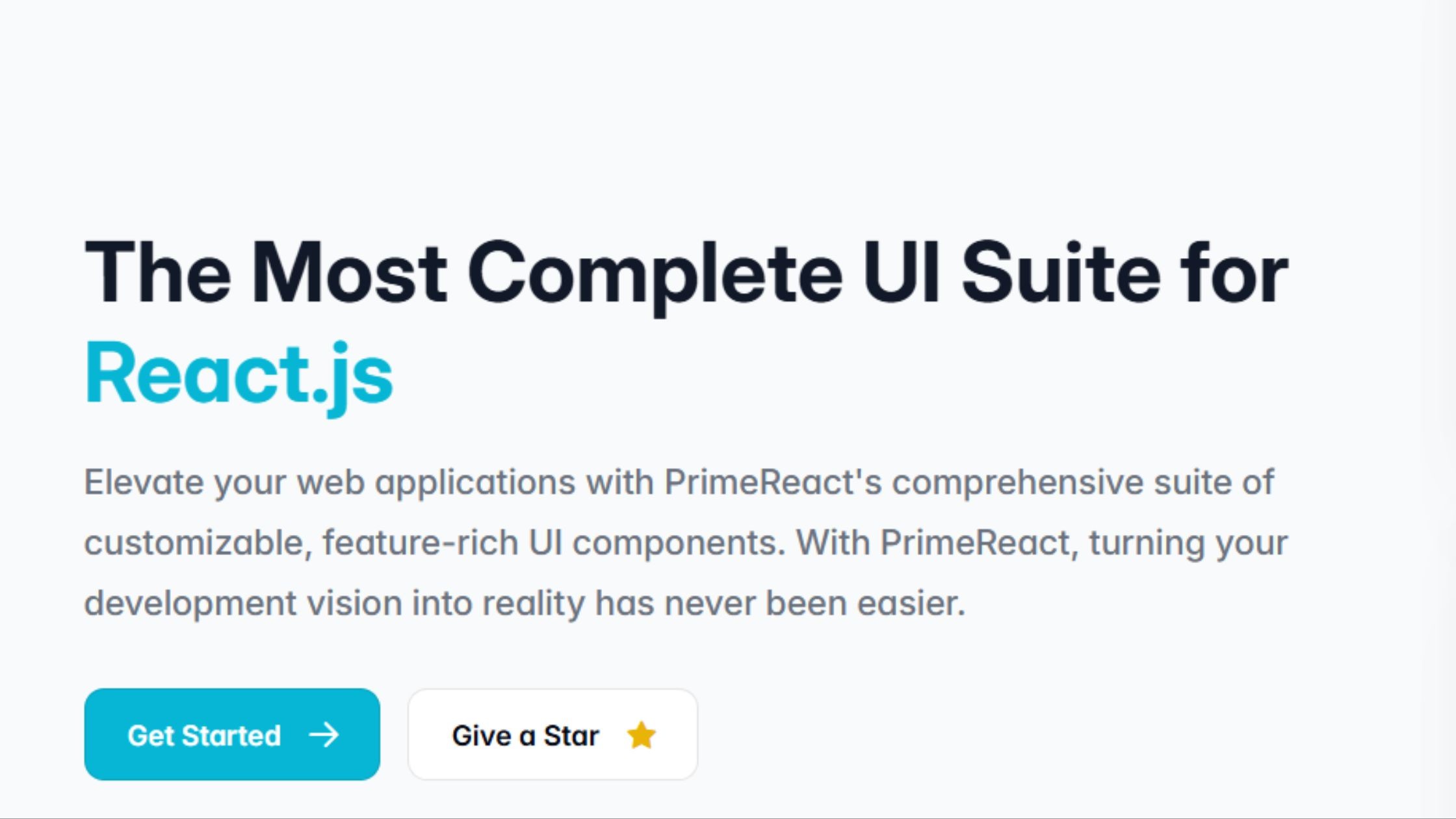
PrimeReact is a design-agnostic React UI library renowned for its extensive set of over 90 components, enabling developers to build enterprise applications with advanced tables, charts, and form controls. Its flexible theming system, strong accessibility support, and robust internationalization make it a go-to solution for large-scale business, fintech, and analytics platforms.
GitHub Stars: 18k+
Weekly Downloads: 2.2M+
Key Features:
90+ prebuilt UI components, advanced tables, tree controls, and charting make it easier for developers to create custom themes.
Design-agnostic and easily themeable
Data export, import, and validation tools
Accessibility and internationalization are built in
Benefits:
Ideal for ERP, fintech, admin, and analytics platforms
Fast release cadence with strong community support
Flexible use: plug-and-play or select components as needed
15. Semantic UI React - Human-Friendly, Declarative
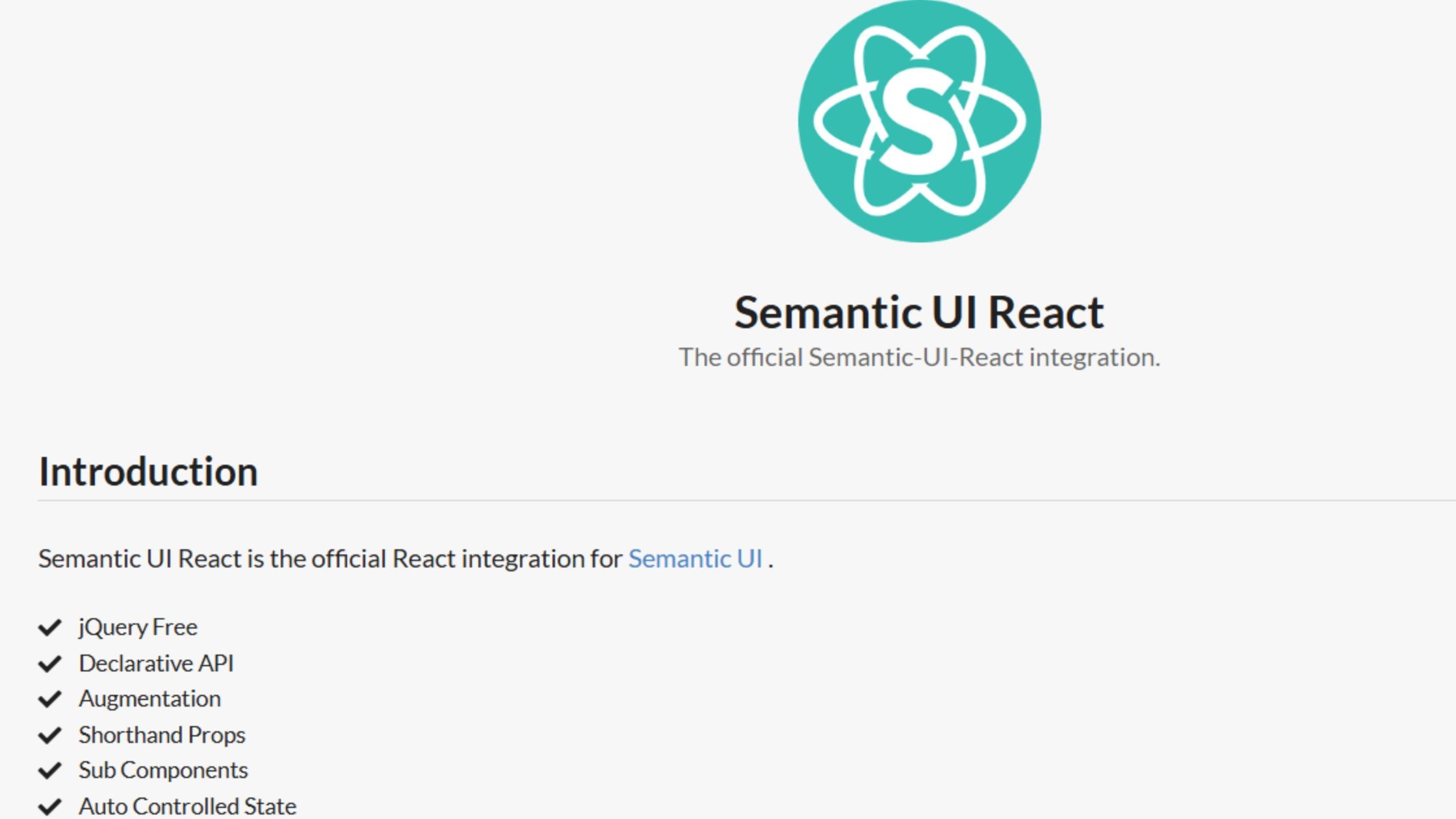
Semantic UI React is known for its intuitive, human-friendly API that uses familiar class-based naming, making it easy for developers to create accessible and cohesive interfaces quickly. It's an excellent choice for teams looking to rapidly prototype applications or prioritize readability and accessibility in production-ready UIs.
GitHub Stars: 13.2k+
Weekly Downloads: 255k+
Key Features:
Human-friendly, class-based API (CSS-based)
100+ UI elements, including messaging, menus, and inputs
Auto-managed component state
Benefits:
Extremely readable and declarative code structure is a hallmark of lightweight libraries that promote efficient development.
Easy adoption for newcomers and quick prototyping
Responsive, accessible out-of-the-box
16. Grommet – Mobile-First, Inclusive by Design
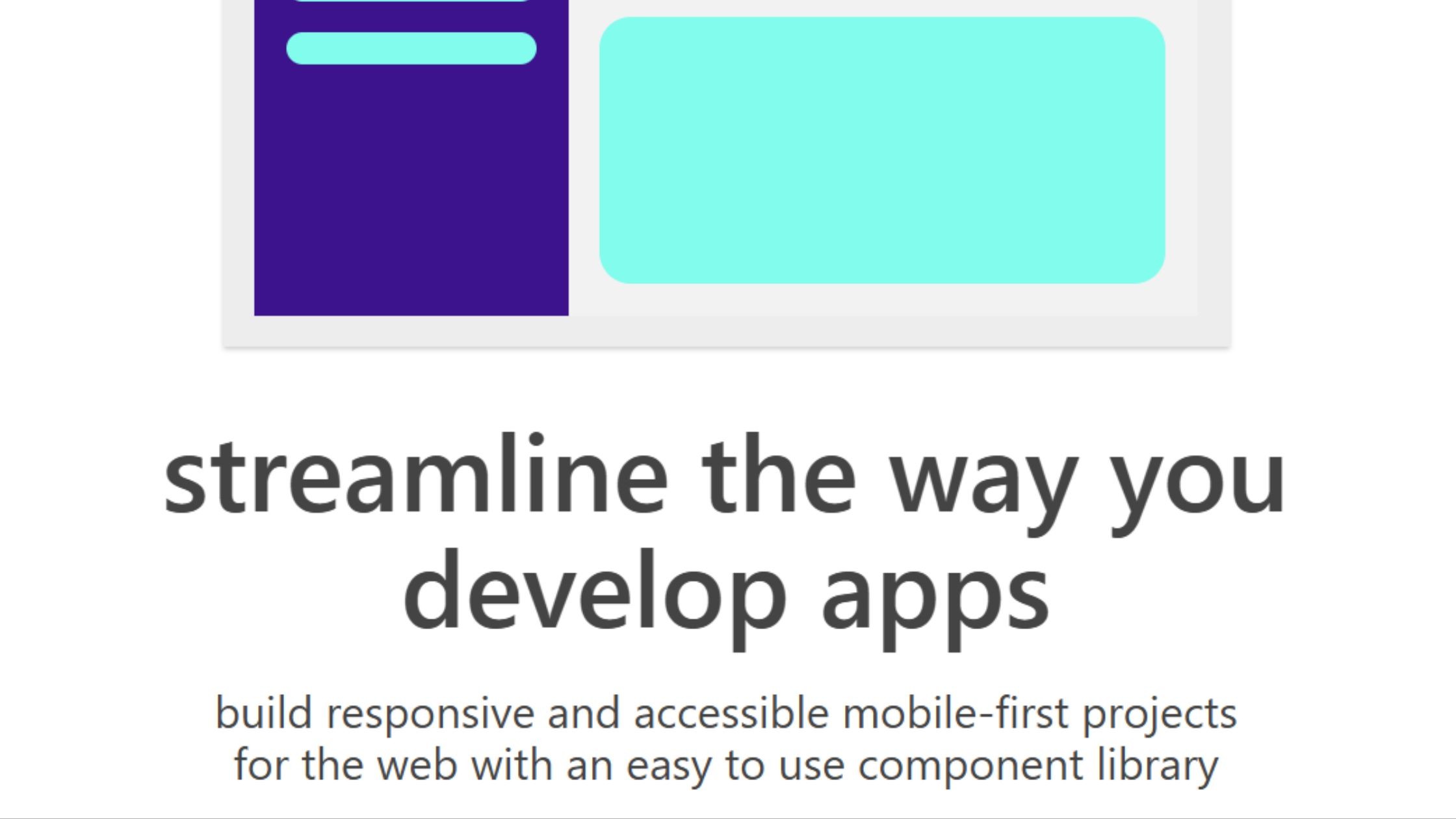
Grommet is designed with a mobile-first philosophy, making it a fantastic fit for responsive, accessible applications that need to perform on a wide range of devices. It offers a unique design system with a strong emphasis on accessibility, flexible theming, and ease of customization, making it especially well-suited for educational tools, public sites, and projects that prioritize inclusivity.
GitHub Stars: 8k+
Weekly Downloads: 48k+
Key Features:
Responsive, mobile-first components
Theming for light, dark, and custom color schemes
Strong accessibility and screen reader support
Benefits:
Excels on touch devices and public-facing apps
Designed for inclusivity, perfect for education and social platforms
Easy to customize with built-in icon support
17. React-Admin – B2B Admin Framework
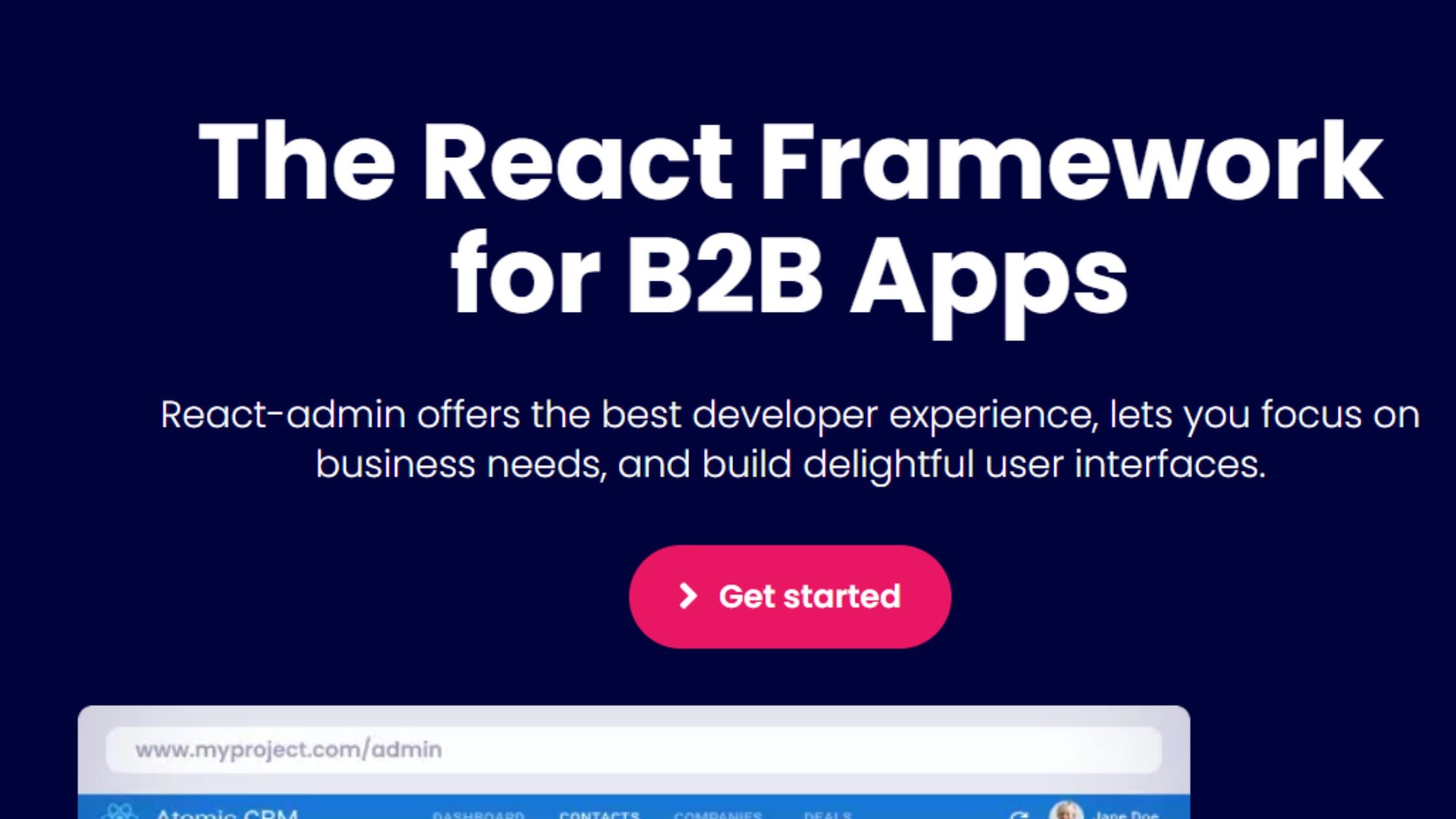
React-Admin is a specialized framework designed for efficiently building scalable back-office and business-to-business (B2B) admin panels. Leveraging Material UI at its core, React-Admin streamlines the creation of robust CRUD interfaces, supports integration with REST and GraphQL APIs, and delivers built-in accessibility and customizable workflows for complex enterprise needs.
GitHub Stars: 26.3k+
Weekly Downloads: 112k+
Key Features:
Built atop Material UI
Authentication, authorization, and CRUD workflow support
REST/GraphQL backend integration, rich form validation
Built-in accessibility and responsive design
Benefits:
Enables rapid build of scalable admin panels
Used by major organizations and enterprises
18. Onsen UI – Native Mobile & Hybrid Specialist
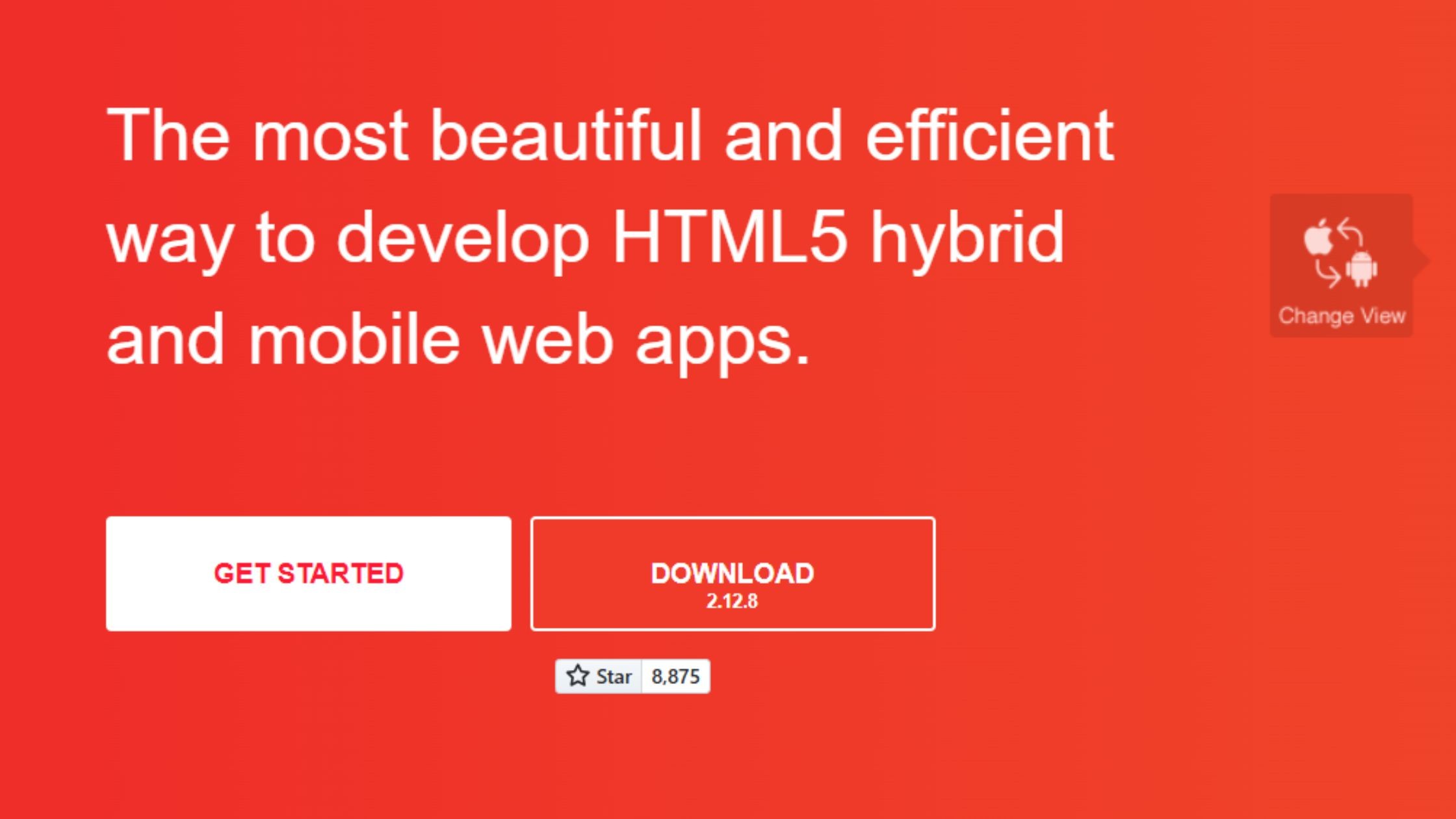
Onsen UI is designed for cross-platform development, allowing teams to create hybrid mobile and web applications with a native look and feel. With robust mobile-focused components and gesture support, it streamlines the process of building responsive, app-like interfaces for both iOS and Android from a single codebase.
GitHub Stars: 8k+
Weekly Downloads: 5k+
Key Features:
Mobile-focused UI and gesture support
Pre-built iOS and Android-style themes
Lazy loading for optimal performance
Router integration for efficient cross-platform delivery
Benefits:
Enables building hybrid mobile/web applications with near-native performance
Provides a polished, mobile-first user experience in a small bundle
Ideal for teams targeting both iOS and Android with one codebase
19. CoreUI – Modern Admin Templates
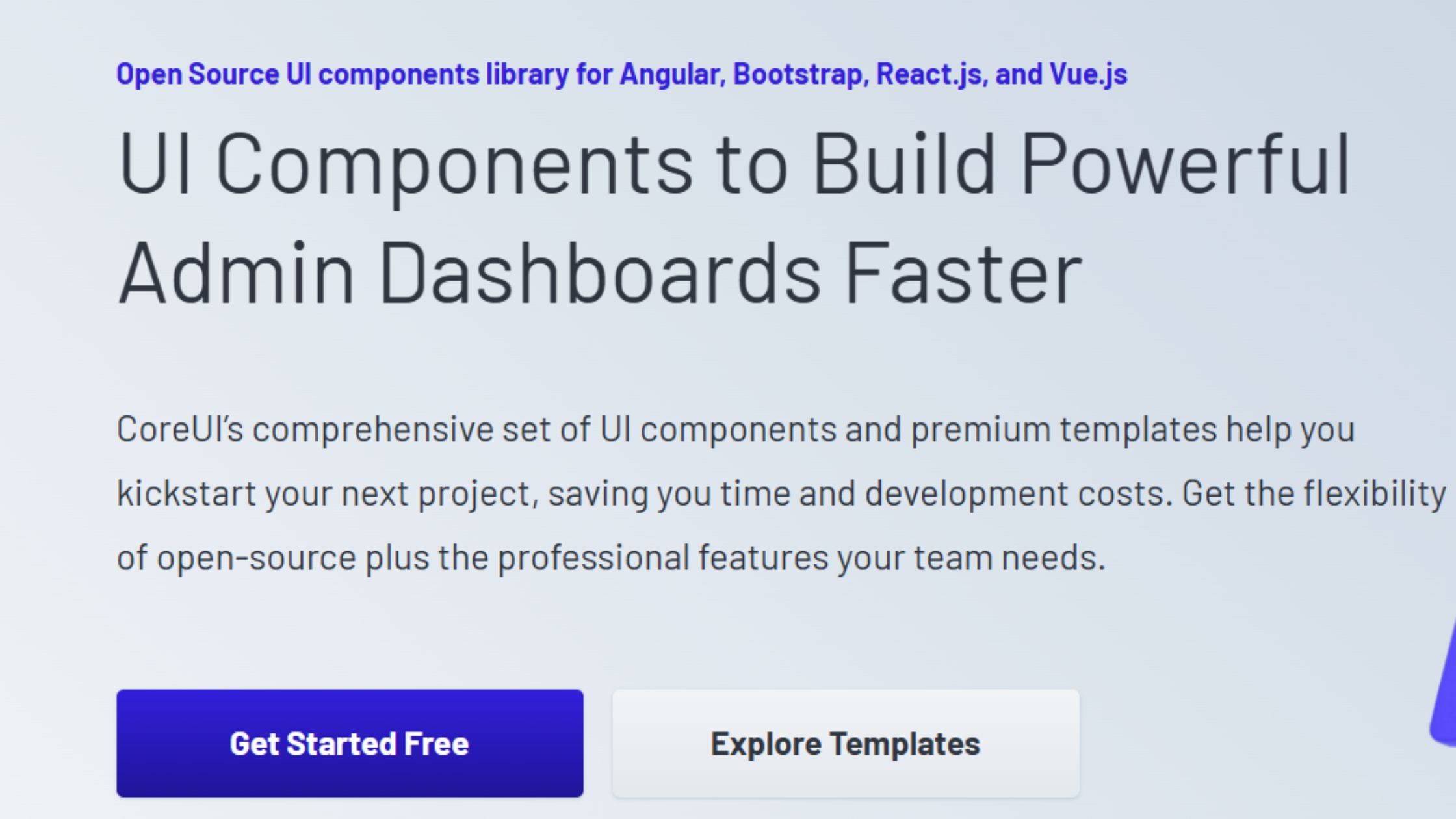
CoreUI is a modular React UI library dedicated to providing pre-built admin and dashboard templates. Designed for flexibility and cross-platform development, it supports teams working across React, Angular, and Vue, streamlining the creation of professional back-office interfaces with minimal setup.
GitHub Stars: 712+
Weekly Downloads: 93k+
Key Features:
Modular SASS-based admin and dashboard templates
Integrated icon set and exclusive widgets
Cross-browser support
RTL/LTR toggle for multilingual layouts
Suitable for multi-platform (React, Angular, Vue) teams
Benefits:
Quick assembly of back-office dashboards
Delivers a modern look and user experience without heavy customization
Simplifies cross-platform development for diverse frontend stacks
Strategic Guidance for Choosing Your Stack
When it comes to selecting the best React component library for 2025:
For enterprise and scalable projects: Choose libraries like Material-UI (MUI), Ant Design, or PrimeReact, which excel in stability, performance optimization, and community support.
For brand customization and long-term flexibility: Consider libraries that allow developers to create custom themes easily. Headless UI frameworks, such as Radix UI, React Aria, Headless UI, and shadcn/ui, offer the best foundation for a unique, maintainable design system.
For speed and smooth developer workflow: Toolkits like Chakra UI, Mantine, and HeroUI balance out-of-the-box usability with a deep capacity for unique themes and visual innovation.
For mobile or hybrid web development: Libraries like Grommet and Onsen UI prioritize responsive, native-like experiences and are optimized for mobile, making them ideal for developers building app-like interfaces.
FAQs
1. How do I choose between Headless UI libraries and pre-built UI component libraries in 2025?
Headless options (like Radix UI, React Aria, Headless UI) give you logic and accessibility without design opinions, great for creating custom design systems guided by your own style guide. Pre-built UI libraries (MUI, Ant Design) offer consistent, production-ready components for rapid delivery and a cohesive look out of the box.
2. What are the benefits of using utility-first libraries like shadcn/ui?
Utility-first UI libraries provide maximum flexibility, allowing developers to copy, extend, and own component logic. They’re ideal for scalable projects and teams that value code ownership.
3. Are lightweight React UI libraries good for mobile applications?
Absolutely. Options like Grommet, Mantine, and Onsen UI are lightweight and focused on mobile compatibility, performance, and customization.
4. Do these UI component libraries support integration with Next.js?
Yes. Most of the top React UI libraries for 2025 and 2026 (including Headless UI, Chakra UI, and HeroUI) are fully compatible with Next.js, supporting SSR, lazy loading, and optimized workflows for modern web apps.
5. How important is community support when picking a UI library?
Community support ensures frequent updates, bug fixes, documentation enhancements, and a steady stream of new features, key to future-proofing your project and staying aligned with best practices.
Final Thoughts
The race for the best React UI library in 2025 is all about balancing performance, accessibility, customization options, and a seamless developer workflow. Whether you’re building for mobile applications, data-dense admin dashboards, or marketing landing pages, this comparison arms you with the insights needed to select a library that will serve your product, users, and team far into the future.
Turn Your Choice into a World-Class Application
Selecting the perfect React UI library is a crucial strategic decision, but the real challenge lies in implementation. Building a scalable, accessible, and pixel-perfect design system that accelerates your business goals requires specialized expertise.
This is where our team comes in. As a leading Frontend & UI/UX service provider, we partner with businesses to transform their vision into high-performance web applications. Whether you need to build a unique brand experience with a headless framework like shadcn/ui, scale an enterprise dashboard with MUI, or ensure flawless mobile-first delivery, we have the expertise to get it done right.
Ready to build a beautiful, fast, and accessible user interface that delights your users?
Contact us today to discuss your project and let our expert team turn your front-end stack into a powerful competitive advantage.
Also Read: Top Frontend Frameworks for Web Application Development in 2025
Follow Us on LinkedIn, Medium, Dev.to, and Twitter for insights on scalable frontends, AI-first design systems, and the future of web experiences.
Data Sources for Stars and Downloads: https://www.npmjs.com/package/, https://github.com/
Frequently Asked Questions
We're ready to answer your questions
Slow releases, clunky dashboards, and frustrated users? You've got questions about how to fix them. We have the Frontend-First answers that unlock growth. Let's talk solutions.

About the author
Author Name:
Parth G
|
Founder of
Hashbyt
I’m the founder of Hashbyt, an AI-first frontend and UI/UX SaaS partner helping 200+ SaaS companies scale faster through intelligent, growth-driven design. My work focuses on building modern frontend systems, design frameworks, and product modernization strategies that boost revenue, improve user adoption, and help SaaS founders turn their UI into a true growth engine.






